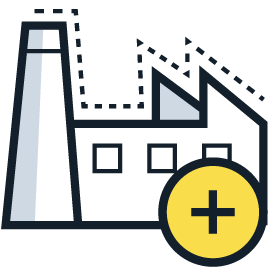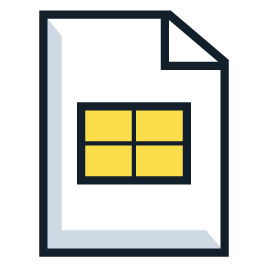Rafael Barros (Operations Manager) and Benjamim Canato (Account Manager) have spent years working with steel manufacturers in Brazil. We sat down with them to learn more about how Industry 4.0 can benefit steel manufacturers, including customer use cases and industry-specifc examples. Here, they share more about how a Digital Twin can benefit steel production.
It seems like Digital Twins are everywhere in manufacturing today, but what exactly is a Digital Twin? A Digital Twin is an exact representation of a production process. It allows for easy and quick visualization of all the characteristics that go into a process.

At first glance, it might seem like all Digital Twins in manufacturing are built the same. Every company promises a virtual simulation of your steel mill so you can monitor, test, or make process improvements. However, at Braincube, we build custom Digital Twins for manufacturing by batch, product, or serial number.
“When we work with steel manufacturers, our data engineers work with process engineers to build a Digital Twin that truly matches the production process,” said Benjamim Canato, Account Manager at Braincube. “This means that our Digital Twin corresponds 100% with the real process.”
For steel manufacturers, this means a Digital Twin that follows a single product’s production process from raw materials to finished product, accounting for every step in between—even if the data lives in different mills or data systems.
Other IIoT companies typically rely on batch tracking for their Digital Twin builds. This can give you a macro view of when a batch is in different parts of the process. For example, it can tell you when a batch of steel billets is in the furnace. However, it is not usually built specifically for your process; it doesn’t follow the end-to-end flow of your unique process from raw material to finished product.
“Braincube’s specialization in the steel industry means that we aren’t limited to just using batch numbers,” said Rafael Barros, Braincube Operations Manager in Brazil. “Our Digital Twin factors in every variable and can tell you distinctly what went into each batch. By knowing which factors are the most influential in your process, your teams can be more prescriptive about what happened during production. This can help you repeat your best recipes time and time again, which leads to reduced cost, risk, and waste.”
Braincube’s specialization in the steel industry means that we aren’t limited to using batch numbers. By knowing which factors are the most influential in your process, your teams can be more prescriptive about what happened during production.
— Rafael Barros, Braincube Operations Manager in Brazil
Let’s go back to the example of a piece of steel entering the furnace. Braincube’s Digital Twin can tell you exactly when the steel bar entered the furnace, was in the middle of the furnace, and when it left the furnace. You can see exactly what happened and when it happened. As a result, you move from an approximate time-based association model to a descriptive model of exactly what happened. Building this tracking into the production process makes Braincube’s Digital Twin very precise; a standard data company cannot do this.
Building a Digital Twin for manufacturing this way—by batch, product, or serial number—is particularly beneficial for steel manufacturers. Steel production is long and takes a lot of time. Tracking data by batch, as Braincube does, gives data teams the correct data to analyze over the entire production process for every product. Engineers can uncover the root cause of problems and find the data that corresponds to these problems, even if the data lives in different and disconnected sources.

“Access to contextualized data is so valuable for steel manufacturers,” says Canato. “If an engineer is looking to analyze the process, there is often a lot of data that isn’t used. Braincube Data Architects can provide specific conditional data based on what the engineer is most interested in analyzing.”
For example, let’s say an engineer uses standard deviation in a certain type of analysis. The engineer can work with Braincube’s Data Architects to receive the standard deviation from the first part of the process and the last part of the process, then analyze it within the same timeline.
Digital Twins can also be useful for continuous production processes. Braincube’s IIoT Platform makes it possible to see data from different data sources or different systems at the same time.
“It sounds so simple, but there is so much value for customers,” says Barros. “With Braincube’s tools, apps, and hypercubic analysis, you can understand how the parameters of your process work and adjust them.”
Some parts of the steel manufacturing process take milliseconds: you can’t fine-tune these processes in realtime. Plus, if you’re using a data lake, you still need to search the data within a timeline and deduce what happened.
A Digital Twin from Braincube lets you see everything, at the same time, from different sources. This puts the right information in your hands and helps you understand the key variables impacting your production process. If you know a lower temperature at one part of the process removes an error down the line, you can adjust that parameter and get the desired result.
“The process itself may be short, such as an hour or two, but you can monitor many different parameters in this process,” says Canato. “If, for example, your finishing process is different and involves different parameters, you can also connect that in the Digital Twin and analyze everything together.”
For more information about how Digital Twins and an IIoT Platform can help your steel business, make sure to read the full interview with Rafael and Benjamim.
More Resources

IIoT and Steel: use cases and advantages
Read the rest of Benjamim and Rafael’s interview on how steel manufacturers can leverage IIoT platforms. They share use cases, industry-specific examples, and more.

Digital Twin resources
There’s a lot of buzz around using Digital Twins to find new revenue streams, optimize, and improve processes. These resources share more about how Digital Twins can help accelerate your business goals.

FAQs: Braincube Digital Twin
Our Digital Twin is custom-built to match your unique processes. Learn more about why this is beneficial for your company.

